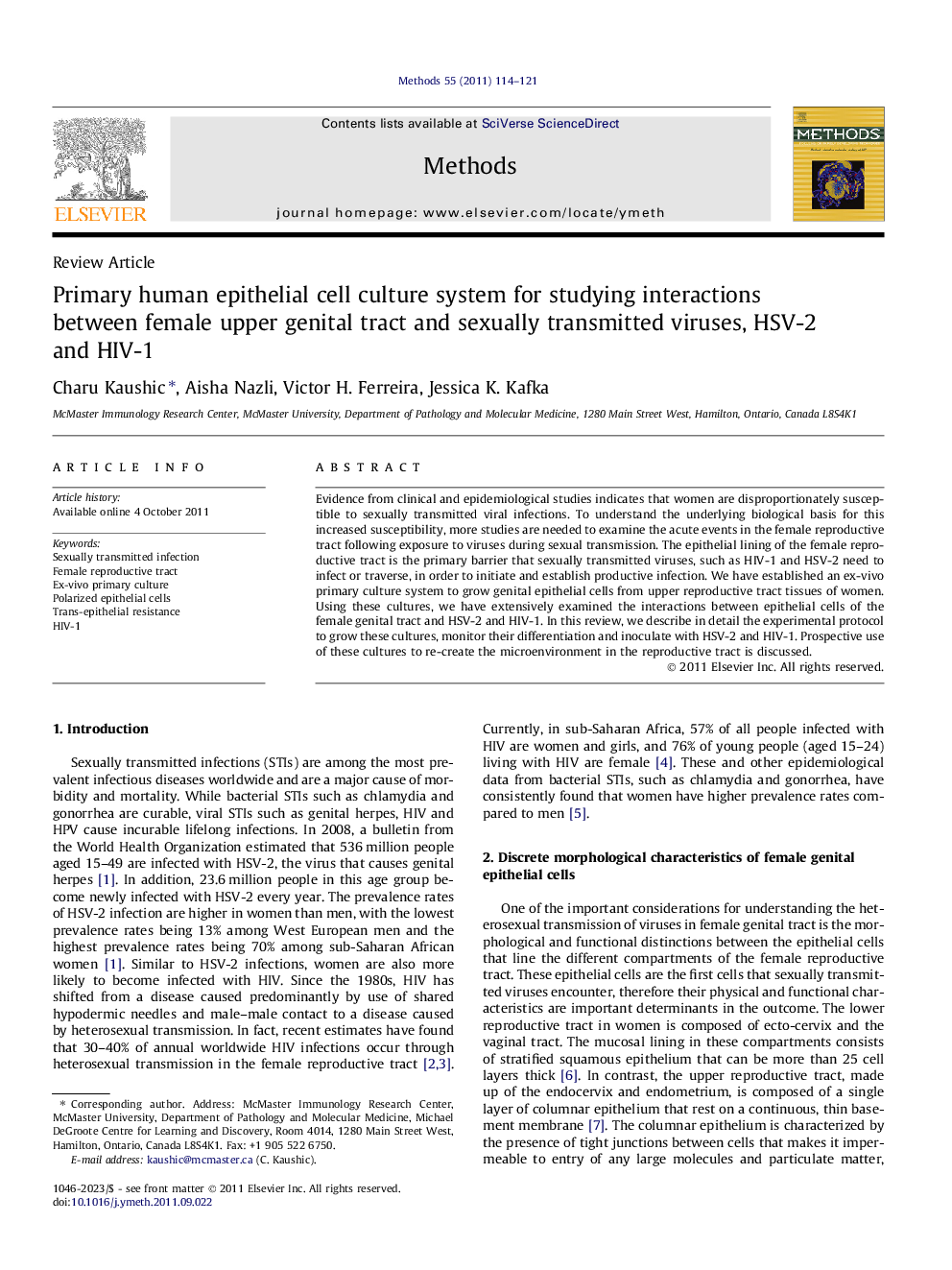| Article ID | Journal | Published Year | Pages | File Type |
|---|---|---|---|---|
| 1993764 | Methods | 2011 | 8 Pages |
Evidence from clinical and epidemiological studies indicates that women are disproportionately susceptible to sexually transmitted viral infections. To understand the underlying biological basis for this increased susceptibility, more studies are needed to examine the acute events in the female reproductive tract following exposure to viruses during sexual transmission. The epithelial lining of the female reproductive tract is the primary barrier that sexually transmitted viruses, such as HIV-1 and HSV-2 need to infect or traverse, in order to initiate and establish productive infection. We have established an ex-vivo primary culture system to grow genital epithelial cells from upper reproductive tract tissues of women. Using these cultures, we have extensively examined the interactions between epithelial cells of the female genital tract and HSV-2 and HIV-1. In this review, we describe in detail the experimental protocol to grow these cultures, monitor their differentiation and inoculate with HSV-2 and HIV-1. Prospective use of these cultures to re-create the microenvironment in the reproductive tract is discussed.
